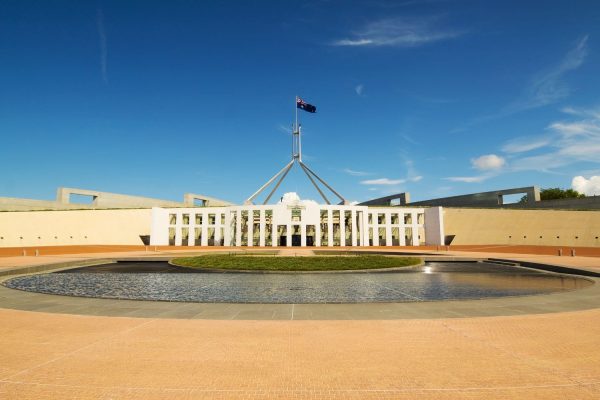Written by Samuel G. Wilson, Vlad Demsar, and Melissa A. Wheeler.
The issue of public integrity, especially among political leaders and institutions, has been top of mind for Australians for several years now. Notwithstanding the fact that former PM Scott Morrison’s integrity crisis continues to grow, with recent revelations that he had himself secretly appointed to five separate portfolios, there are signs that perceptions of government integrity have started to improve in recent months. This is a welcome development and may, in time, contribute to the restoration of public faith in the institutional foundations of Australian democracy.
However, it would be a mistake for political leaders to interpret these green shoots of perceived integrity and trustworthiness as more than weak signals of reputational recovery. As revealed by the Australian Leadership Index (ALI), government institutions face a deeper reputational issue; namely, they are perceived by the public as fundamentally ill-intentioned and incompetent. However, government institutions are not alone in being perceived as lacking competence and integrity, pointing to a deeper reputational issue facing many of Australia’s social institutions.
These insights become apparent when ALI data is interpreted through the lens of the Stereotype Content Model, a model drawn from social psychology that shows that humans perceive, and trust, social others based on two fundamental dimensions: warmth (e.g., friendly, sincere) and competence (e.g., skilled, efficient). Notably, these fundamental dimensions of social perception apply not only to individuals and groups but also organisations, brands, and institutions.
‘Warmth’ relates to our assessment of others’ intentions towards us. A person, group or institution with positive, cooperative intentions appears warm, whereas those with negative, competitive, or exploitative intentions seem cold. By contrast, ’competence’ related to our assessment whether a person or group can enact their intentions. Those who have the skill or ability to carry out their intentions are perceived as competent, whereas those perceived as unable to do so are perceived as incompetent. Critically, the warmer and well-intentioned a person, group or institution appears, the more we are inclined to trust these social others. This insight has profound implications for social institutions.
In the five charts below, we map Australia’s social institutions in terms of their perceived intentions and competence. Although public perceptions of government institutions are our focus, the meaning of these perceptions only becomes clear in the context of a full mapping of the institutions measured by the Australian Leadership Index.

As shown in Figure 1, government institutions are perceived by the public as fundamentally ill-intentioned and incompetent. Although this perception is germane to all three levels of government, it is especially pronounced with respect to the institution of federal government.

As shown in Figure 2, perceptions of public sector institutions are the antithesis of government institutions. Whereas government institutions are seen as ill-intentioned and incompetent, public sector institutions are seen as well-intentioned and competent. The emergency services are held in especially high esteem.

As shown in Figure 3, public perceptions of not-for-profit institutions are decidedly mixed. Whereas charities are seen as well-intentioned and competent, trade unions and religious institutions are seen as ill-intentioned and incompetent. These findings create new insights into why the community has such positive sentiment towards charities and such entrenched negative perceptions of trade unions and religious institutions. Professional sporting clubs and associations fall somewhere between these extremes, seen as competent but not especially well-intentioned.

As shown in Figure 4, public perceptions of business institutions, like not-for-profit institutions, are mixed. Whereas some institutions, such as supermarkets, are seen as especially competent and well-intentioned and enjoy positive public perceptions, most business institutions are seen as basically competent but inclined towards self-interest rather than the public interest. The most profound disdain is reserved for gambling and gaming companies and the media, which are perceived as especially ill-intentioned and incompetent.

As shown in Figure 5, which draws it all together, when all the social institutions tracked by the Australian Leadership Index are mapped on the dimensions of warmth or intentions and competence, a striking picture emerges of Australia’s institutional landscape, as seen by the public. Specifically, this chart reveals that Australia’s social institutions vary markedly but systematically, ranging from those that are seen as fundamentally ill-intentioned and incompetent (i.e., gambling and gaming companies, the media, the federal government) to fundamentally well-intentioned and competent, exemplified by the emergency services.
This is not simply an interesting pattern. The warmer and more competent a social institution is perceived, the more it is trusted, seen as having social licence to operate, and showing leadership for the greater good. This should give Australia’s leaders, especially its political, business and trade union leaders, pause before asking the public to trust their deliberations and assurances of concern for the public interest.




